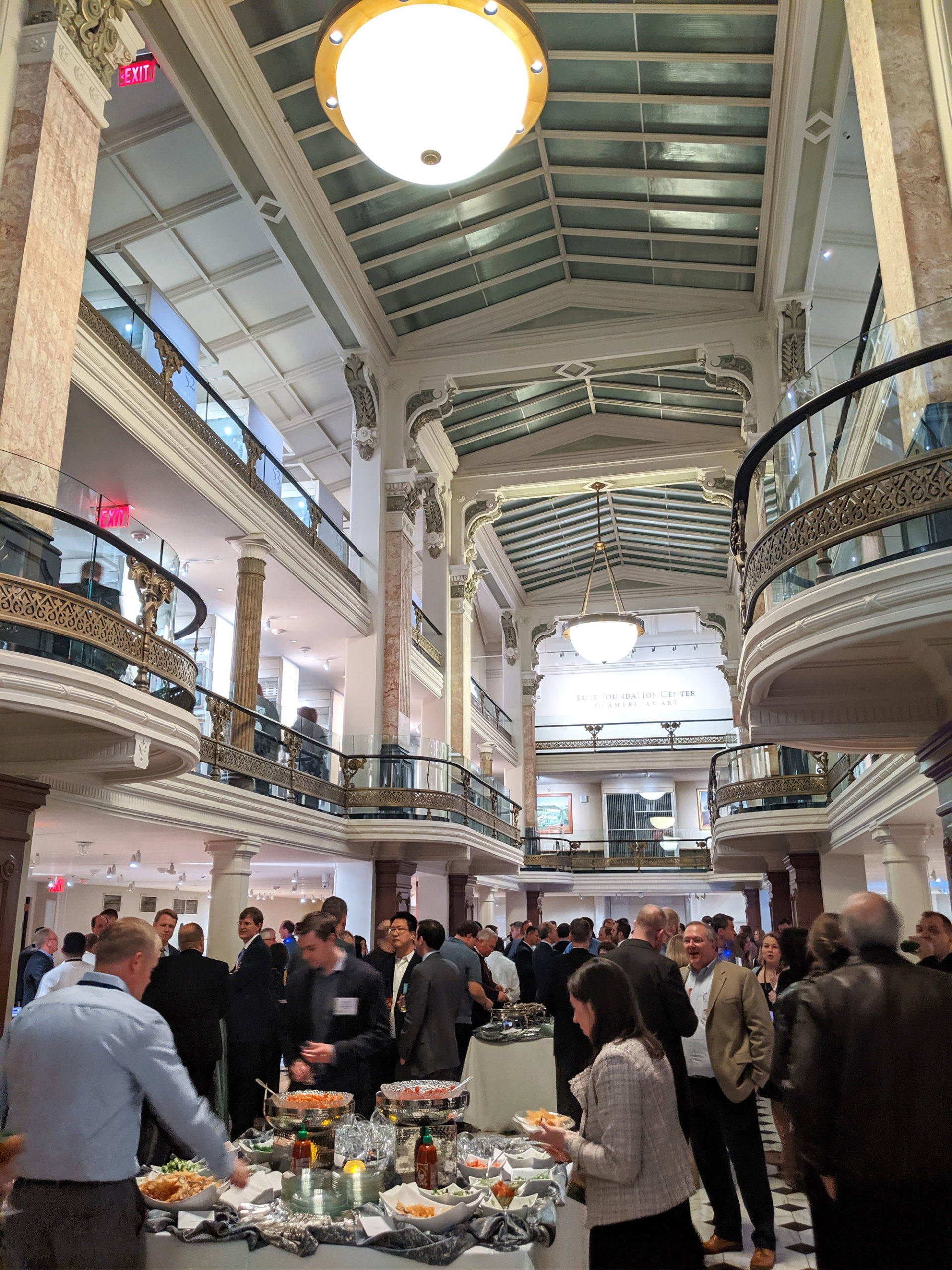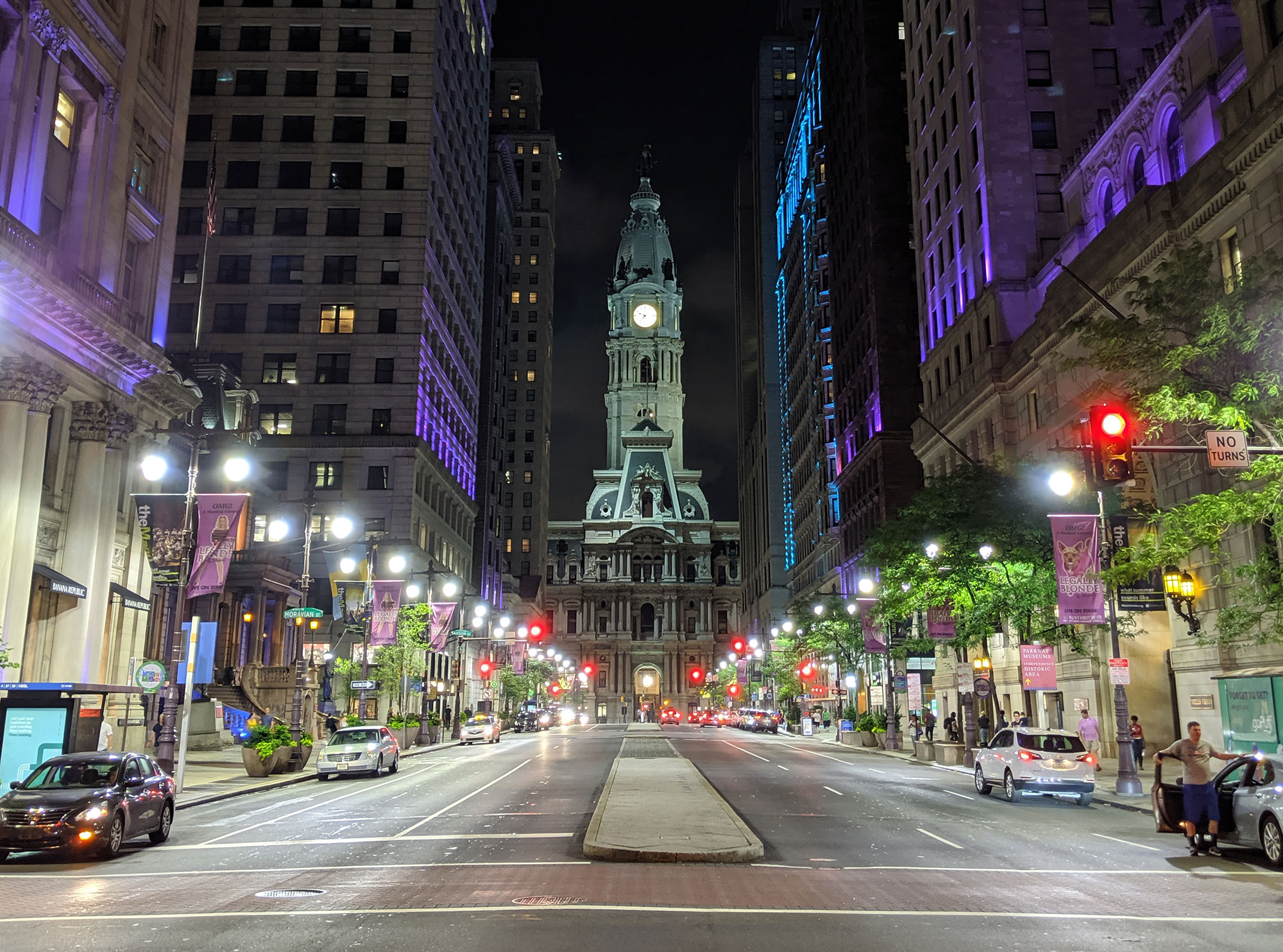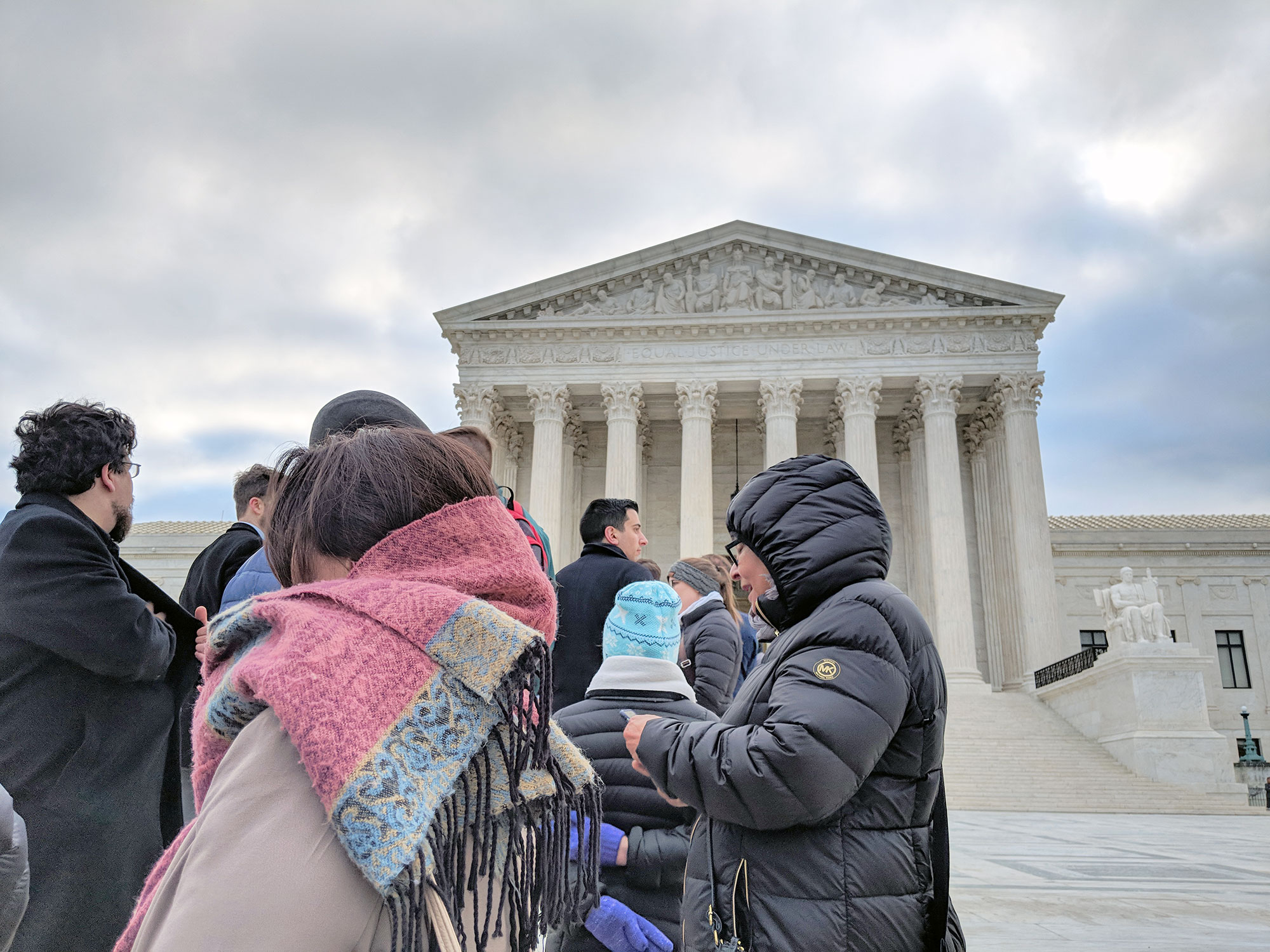It’s shortly after 3 a.m. and I’m walking across D.C. in a black suit carrying two narrow duffle bags.
I am prepared to 1) get mugged, or 2) explain to a police officer that I’m not a hitman, but rather a tax lawyer headed to the Supreme Court.
The duffle bags contain branded folded chairs from my law firm. I am on my way to a hotel to meet an associate lawyer who flew in from one of our other offices.
I make it to the hotel without getting mugged or stopped by a cop.
The associate is outside of the hotel with a woman from a competing law firm in New York. Introductions are made and we then have the most ridiculous time getting a cab – the three taxis in front of the hotel are not interested in driving us only 2 miles to court. They would rather wait for a more lucrative fare to a far flung airport.
We eventually flag a taxi and make it the Supreme Court plaza.
It’s about 4 a.m. and there are already dozens of people camped out in line.
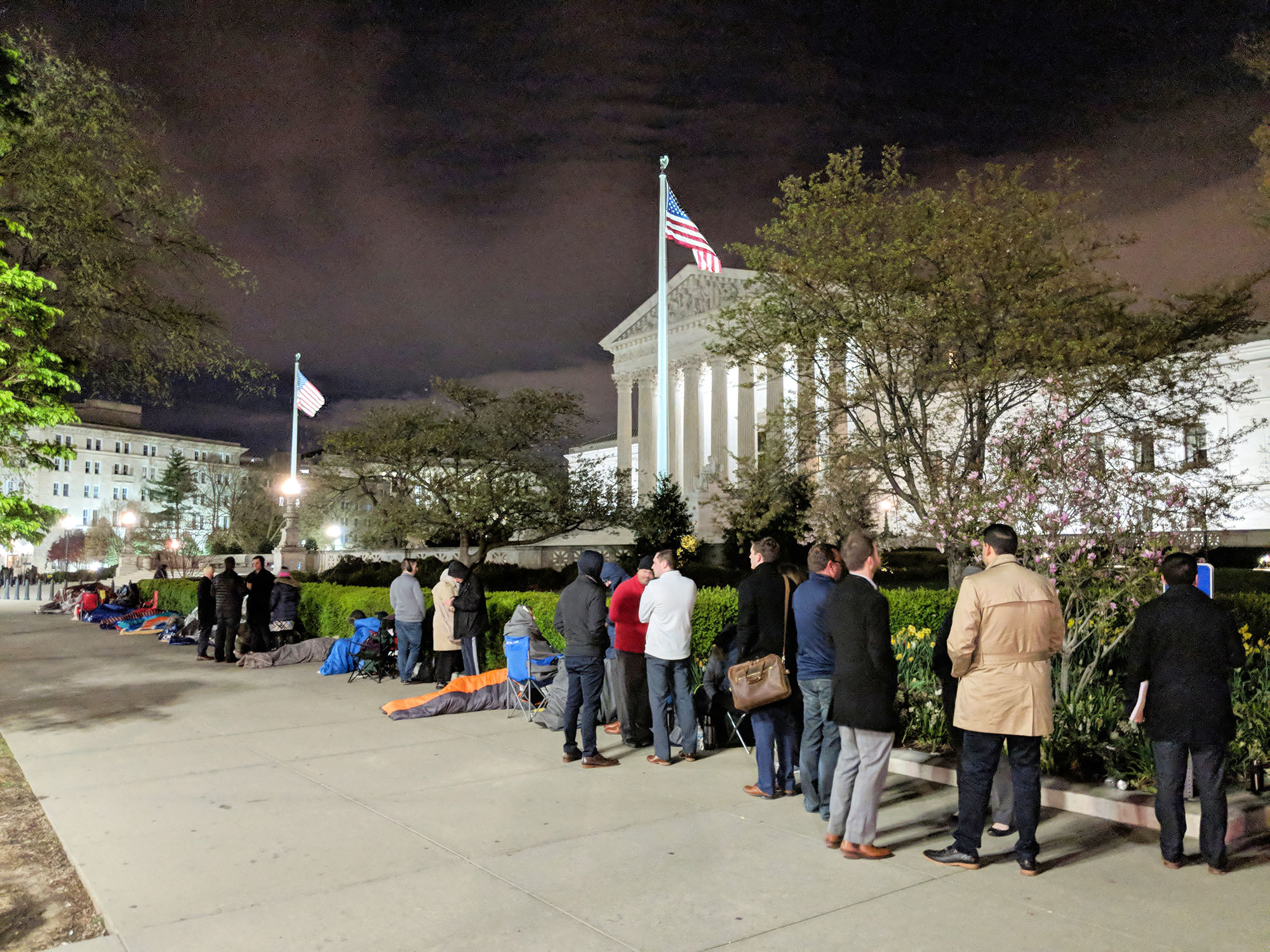
Professional line-standers in front of the Supreme Court.
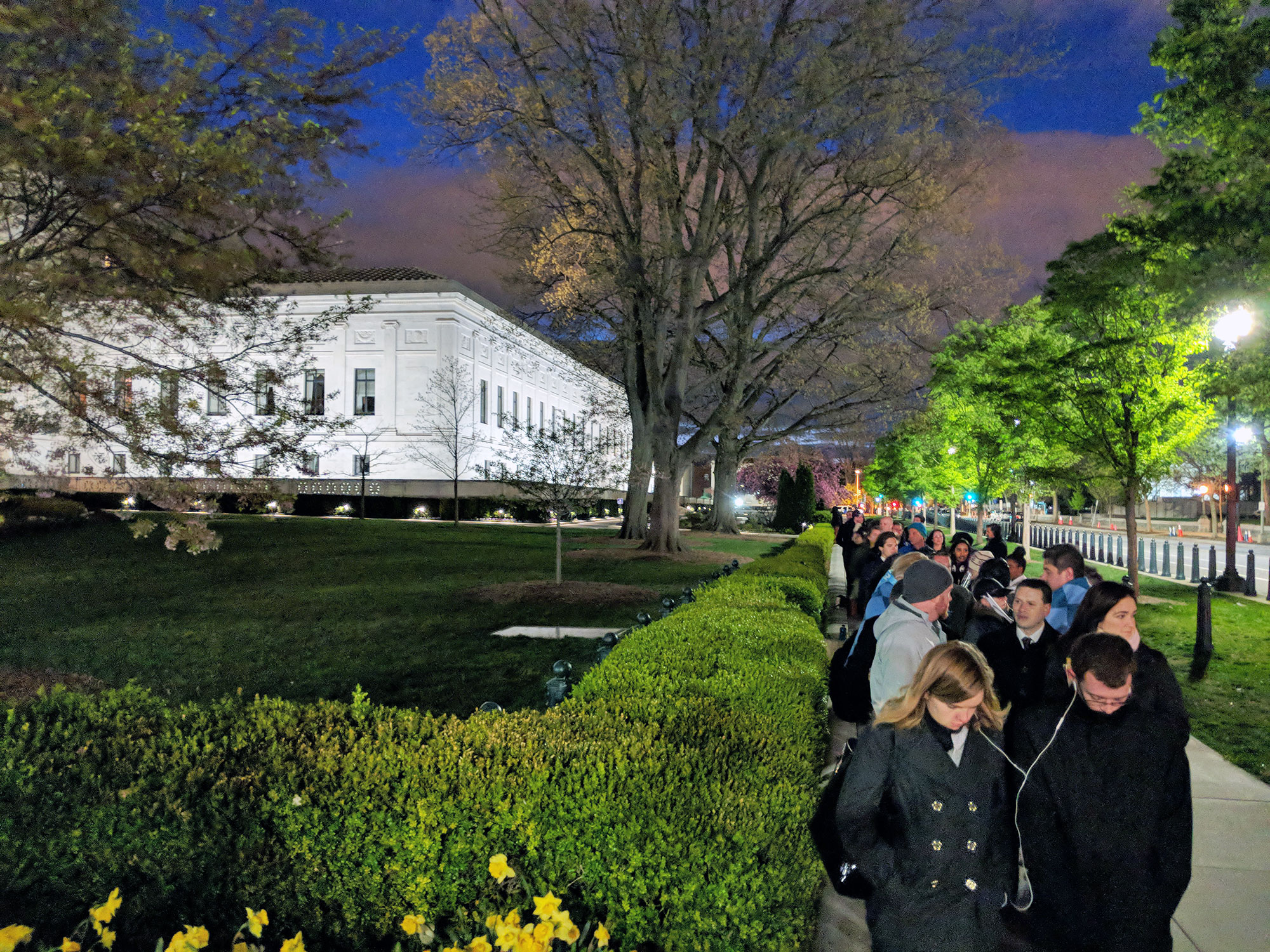
The lines in front of the Supreme Court before the Wayfair v. South Dakota oral arguments.
The case that attracted this odd mix of tax lawyers, tourists, and professional line-standers is South Dakota v. Wayfair. This is the first major state and local tax (SALT) case to reach the Supreme Court in about 25 years and my SALT professors have been buzzing about the case ever since my first week at Georgetown’s tax LL.M. program.
In August, I never imagined that I would actually be present at such an important Supreme Court oral argument. (The timing at the end of the semester is terrible.) And yet here I am, in the middle of the night among new coworkers.

